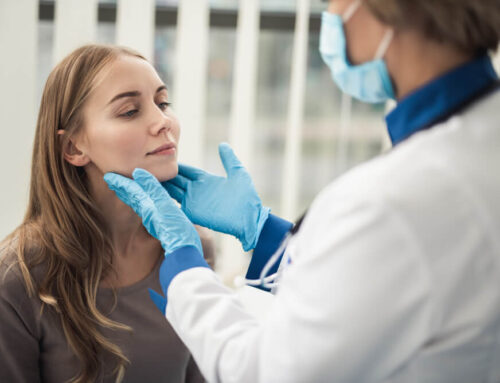Sexually transmitted diseases (STDs) are some of the most common diseases women have to deal with. A person can contract STD from unprotected sexual intercourse, but many people are unaware that STDs are also passed through oral-to-genital contact as well as kissing. This is why we want to share the five most common STDs and improve your knowledge and understanding of them. After all, health complications and consequences can turn rather serious when you have an untreated STD for too long. Some of the most common signs of STD in women include vaginal rashes and pain, untypical discharge, and itching. However, not all STDs are accompanied by the same set of symptoms. That said, let’s discuss the five most common STDs that the female population is especially vulnerable to.
5 Most Common STDs in Women
1. Chlamydia
As a matter of fact, the most common STD in the US is chlamydia. However, this is not the worst STD as the treatment is rather simple and easy. Oral antibiotics can manage the issue just fine. The typical signs of STD in women when chlamydia is concerned include abnormal vaginal discharge and painful intercourse.
Chlamydia is a bacterial infection that generally attacks the cervix. This infection is also not easy to detect as many affected women may be completely asymptomatic. This is precisely why chlamydia is the most common STD in the US, as mentioned – infected people may spread it further as they don’t even know they have it due to the lack of clear symptoms. However, if there’s even a tiny suspicion that you might have contracted it, make sure to see your doctor as soon as possible. Even though the treatment is far from challenging, leaving this untreated STD to wreak havoc in your body can lead to serious health complications.
2. Gonorrhea

Gonorrhea is the oldest STD known today, also called “the clap.” It affects the cervix just like chlamydia, and this untreated STD can pose many dangers to the overall health. Signs of STD in women when it comes to gonorrhea include:
- Yellow or green vaginal discharge.
- Painful intercourse.
- Pain in the lower abdomen.
Much like in the case of chlamydia, gonorrhea tends not to show symptoms right away. This is precisely why regular STD testing is crucial for women’s health as well as the health of their sexual partners. What’s more, gonorrhea infection is limited to the genitals, but the infection can also spread to the throat due to oral sex. Gonorrhea infection can also happen in the anus and the eyes.
The treatment typically involves an injectable or oral antibiotic that has to be fully completed to prevent the recurrence of this STD.
3. HPV
The second most common STD in the US is the Human Papilloma Virus (HPV). Today we have a vaccine that prevents HPV infection, but before it was developed, around 25% of sexually active women were infected by this virus.
For some, HPV is also the worst STD as there are several different strains of the virus that can affect one’s health considerably. While there are strains with no distinct symptoms, there are others that could cause genital warts and some were even connected to cervical cancer. If you’re sexually active, make sure to discuss the HPV prevention vaccine with your doctor.
4. Genital Herpes
Genital herpes is another common STD that has two different types, namely HSV1 and HSV2. The one that’s more feared and connected to the genital sores is the type HSV2. What’s more, HSV2 can infect genitals through the mouth and vice versa. This type of herpes is not curable, which can easily make it the worst STD out there.
Once the symptoms of herpes appear, they can be managed with antiviral meds, but not actually cured. This means that the virus carriers can still potentially infect their partners, regardless of whether there’s a flare-up or not. Using condoms can definitely minimize the risk of contracting herpes, but the protection is not at 100%, considering that the infection is possible even with skin-to-skin contact.
5. Hepatitis
Just like HPV, there are different strains of the hepatitis virus. In general, hepatitis B and C are commonly associated with sexual intercourse. It is believed that about 1.25 million people in the US only have some kind of hepatitis. Both hepatitis B and C can damage the liver and cause further health issues such as cirrhosis, scarring, and liver cancer in the worst-case scenario.
It’s possible to be infected by hepatitis and be completely asymptomatic. Signs of this STD in women when they do show up include abdominal and joint pain, fever, nausea, and fatigue. Obviously, hepatitis is a very serious infection, but the silver lining is that there is a hepatitis protection vaccine you should discuss with your doctor.
Most Common Signs of STD in Women

While we mentioned that it’s possible to be completely asymptomatic when some STDs are concerned, there are still very common signs and symptoms that no woman should ignore.
- Burning or pain when urinating, bloody urine, and frequent need to urinate
- Very thick and white vaginal discharge or green/yellowish discharge
- A very itchy vaginal area
- Painful sexual intercourse
- Unusually heavy bleeding
- Sores, rashes, or small pimples around the vagina or mouth
STD Preventative Measures
In order to protect yourself and your sexual partner(s) against STD infections, it’s important to take prevention seriously.
Make sure to do regular tests and screenings. For instance, women should do a Pap smear every three to five years; and even more frequently if there’s some underlying gynecological condition. When you pay a visit to your doctor, don’t hesitate to discuss the possibility of other STD testing as well as vaccination.
Protection can minimize the risk of infection considerably. Using a condom for all kinds of sex, be that vaginal, oral, or anal, is the best way to protect yourself and your partner. There are also dental dams and female condoms that can provide some amount of protection.
However, it’s important to note that non-barrier methods of birth control, such as birth control pills and spermicides, don’t actually provide protection against STDs.
Finally, it’s crucial to be open and transparent about your sexual history when communicating with your partner(s) and your doctor.
Unfortunately, STDs are some of the most common diseases that affect women’s wellbeing and health. The challenge of identifying them is even bigger when the infected person is asymptomatic. What’s more, an alarming number of people choose not to report the issue to their doctor due to the associated embarrassment and shame. Sadly, the consequences that untreated STDs could have on one’s overall health can be very dangerous.
You can count on professional treatment for women, by women, from adolescence to menopause. This is why we at Fern F. Taisenchoy-Bent, MD, work hard to dispel any stigma when it comes to women’s gynecological health. Don’t hesitate to reach out to us at our Margate clinic if you have any GYN issues, regardless of what they are.










